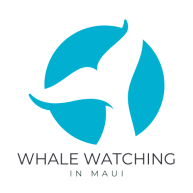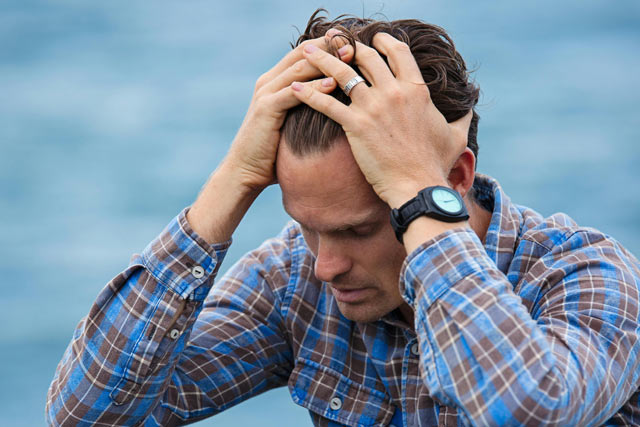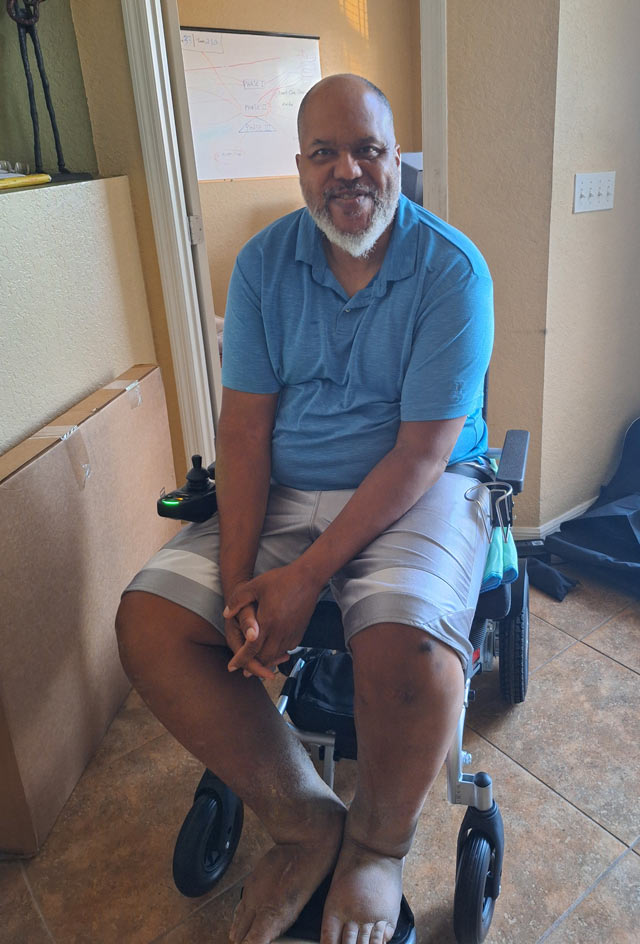The very first thing I should say is that I’m most definitely NOT a doctor or medical professional. Also, what I share in this post shouldn’t be taken as medical advice. Be sure to consult with your doctor before trying anything mentioned in this post about whale watching seasickness.
With that first bit out of the way, I think we can all agree that whale watching is an unforgettable and exciting experience. After all, it’s a chance to witness the majesty of these incredible animals in their natural habitat. But for some, the excitement of spotting a breaching whale can be overshadowed by a less welcome guest: seasickness.

Don’t let nausea ruin your incredible adventure! This guide is packed with practical tips and effective remedies to help you beat whale watching seasickness and enjoy your trip to the fullest. Whether you’re prone to motion sickness or just want to be prepared, we’ll cover everything from pre-trip preparations and onboard strategies to natural remedies and medications.
Let’s go ahead and learn how to prevent whale watching seasickness so you can focus on the breathtaking sights and create memories that will last a lifetime.
Prefer to listen on the go? Hear The deep dive on Beating Sea Sickness.
Key Takeaways
- Seasickness is caused by conflicting signals sent to the brain from the inner ear, eyes, and other sensory systems when on a boat.
- Selecting a larger vessel, shorter tour, and researching calmer sea conditions can minimize the risk of seasickness. Open-air decks can also be beneficial.
- Consulting your doctor, packing a seasickness kit, staying hydrated, eating light meals, and getting good sleep are crucial pre-trip steps.
- Over-the-counter and prescription medications are available for seasickness, but it’s important to consult a doctor due to potential side effects and timing.
- Ginger, acupressure bands, aromatherapy, and focusing on the horizon are natural remedies that can help alleviate seasickness.
- If seasickness hits, focus on the horizon, get fresh air, avoid reading, stay calm, and inform the crew.
Understanding Why Seasickness Strikes on Whale Watching Trips

Seasickness, that queasy feeling and unsettling nausea that can hit you when riding a boat, can quickly dampen the excitement of a whale watching adventure. But why does it happen, especially on whale watching trips?
It all comes down to a bit of a communication breakdown within your body. Your inner ear, eyes, and other sensory systems work together to help you maintain balance. However, on a boat, these systems can send conflicting signals to your brain.
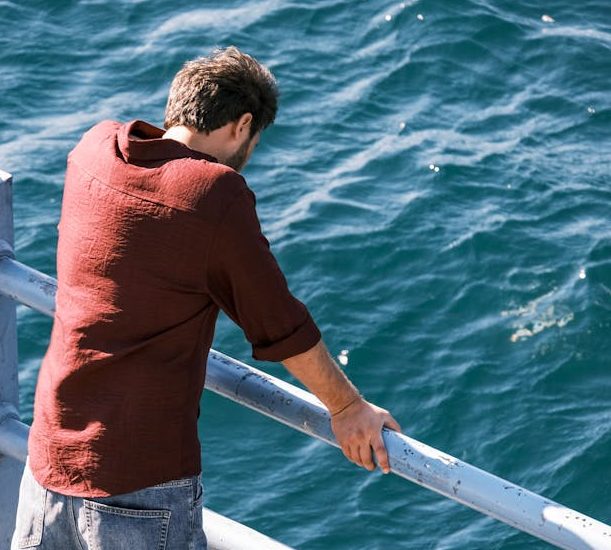
Imagine this: your eyes are telling your brain you’re moving – you see the waves, the boat rocking – but your inner ear, which senses motion, might not be fully agreeing, especially if the motion is subtle or irregular. This sensory mismatch is the primary culprit behind whale watching seasickness. Your brain gets confused trying to process these conflicting messages, and that confusion manifests as nausea, dizziness, and other unpleasant symptoms.
Several factors can contribute to this sensory overload and make whale watching seasickness more likely. These include the size and movement of the boat, the sea conditions (choppy waves vs. calmer waters), and individual susceptibility to motion sickness. Some people are simply more prone to it than others. Understanding the underlying cause is the first step toward effectively preventing and treating it.
Fun Fact!
Studies have shown that anywhere from 3% to 60% of passengers on cruise ships experience motion sickness, depending on the study and the ship’s conditions.
Choosing a Whale Watching Tour for Minimizing Seasickness

The type of whale watching tour you choose can significantly impact your risk of seasickness. Not all tours are created equal when it comes to stability and comfort.
Pro Tip!
⚠️ The #1 Boat Type to Avoid: If you are prone to motion sickness, AVOID the small Zodiac Rafts. While they are fast and fun, they sit low in the water and feel every single bump. For the smoothest ride, you MUST book a Catamaran (Double Hull). The two hulls slice through the waves rather than bobbing on top of them.
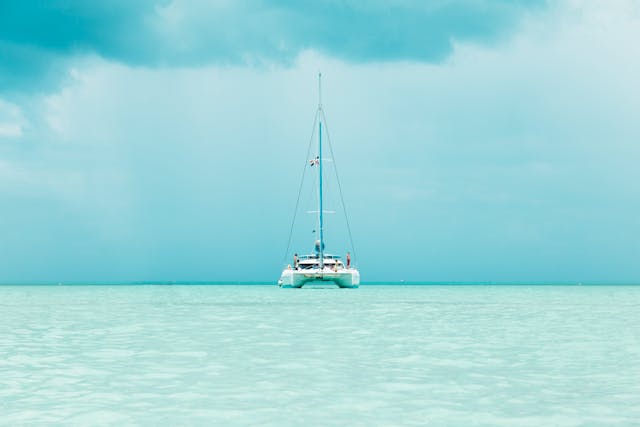
Here’s what to consider when selecting a whale watching tour to minimize your chances of feeling queasy:
- Vessel Size and Type: Larger vessels, like catamarans or larger boats, generally offer more stability than smaller, single-hulled boats. Their size and design help them ride the waves more smoothly, reducing the rocking and rolling motion that contributes to whale watching seasickness. Inquire about the size and type of boat used for the tour.
- Tour Duration: Shorter tours mean less time exposed to potential rough seas. If you’re particularly prone to motion sickness, consider a shorter whale watching excursion.
- Location and Sea Conditions: Research the typical sea conditions in the area where the whale watching tour operates. Some locations are known for calmer waters than others. Ask the tour operator about the usual sea conditions and if they have any alternative routes in case of rough weather.
- Reviews and Recommendations: Read online reviews from previous passengers. Pay attention to comments about seasickness and the overall comfort of the tour. See if there are any recommendations for whale watching tours that are known for being smoother.
- Open Decks vs. Closed Cabins: Open-air decks offer more than fantastic views. They also offer a better opportunity of avoiding whale watching seasickness. Also, they offer a way to focus on a view of the horizon, which can be an aid in beating the cause of whale watching seasickness.
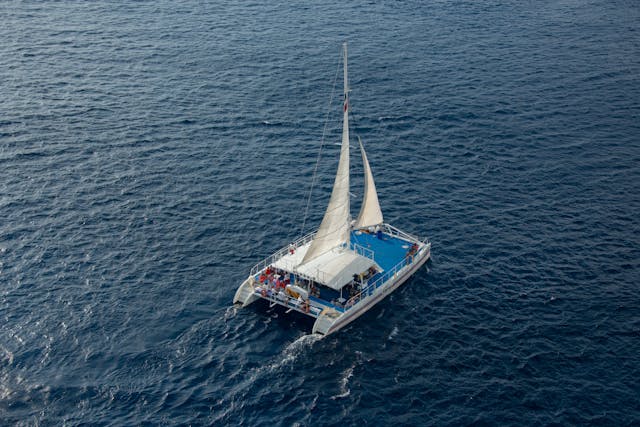
If you consider these factors while doing your research into whale watching cruises, you can choose a whale watching tour that maximizes your chances of a comfortable and enjoyable experience and minimize the risk of seasickness.
What to Do Before You Set Sail to Avoid Whale Watching Seasickness

Preparation is key to minimizing your risk of whale watching seasickness and ensuring a smooth, enjoyable trip. A little planning before you even step foot on the boat can make a world of difference. Here’s what you should do before setting sail:
- Consult Your Doctor: If you have a history of motion sickness or any underlying health conditions, talk to your doctor. They can advise you on the best preventative measures, including medications or alternative therapies that might be suitable for you.
- Pack Smart: Prepare a seasickness kit when packing for your whale watch trip. This could include over-the-counter medications like Dramamine or Bonine (always follow dosage instructions!), ginger candies or supplements, acupressure bands, and any other remedies you prefer.
- Choose Your Tour Wisely: Research whale watching tour operators. Some companies offer tours on larger vessels that are more stable in the water, which reduces motion. Check reviews and inquire about the typical sea conditions for the tour area.
- Stay Hydrated: Staying hydrated is a crucial pre-trip preparation for warding off whale watching seasickness! Dehydration can worsen nausea, so drink plenty of water in the days leading up to your trip and continue to sip water regularly throughout the day of your excursion.
- Plan Your Meals: Avoid heavy, greasy, or spicy foods before your trip. Opt for light, easily digestible meals. Some people find it helpful to eat a small amount of something bland, like crackers, before boarding.
- Get a Good Night’s Sleep: Being well-rested can make you less susceptible to motion sickness. Aim for a full night’s sleep before your whale watching excursion.
Pro Tip!
To avoid whale watching seasickness, try to secure a spot on the boat that experiences less motion. Mid-ship and lower decks tend to be more stable than the bow (front) or stern (back) of the boat.
Those pre-trip precautions may significantly reduce the chances of whale watching seasickness hitting you and can set you up for a fantastic experience. Let’s now take a look at available medications.
Seasickness Medications: Pros, Cons, and Recommendations
For some, medication can be a helpful tool in preventing or managing seasickness on a whale watching trip. But it’s important to understand the pros, cons, and different options available for you.
Pros:
- Effective Prevention: Seasickness medications can be very effective at preventing nausea and other symptoms, allowing you to fully enjoy your trip.
- Quick Relief: Some medications can also provide timely relief if you start feeling seasick while on the boat.
Cons:
- Side Effects: Most seasickness medications can cause side effects like drowsiness, dry mouth, or blurred vision. It’s crucial to be aware of these potential side effects before taking any medication.
- Not for Everyone: Certain medications may not be suitable for everyone, especially those with pre-existing medical conditions or who are taking other medications. Always consult your doctor before taking any new medication.
Pro Tip!
Seasickness medication is most effective when taken before you start experiencing symptoms. It’s usually recommended to take it an hour or two before boarding the boat.
Recommendations:
- Over-the-counter options: Common over-the-counter medications include Dramamine (dimenhydrinate) and Bonine (meclizine). These are generally effective for mild to moderate seasickness. Always follow the dosage instructions on the label.
- Prescription medications: For more severe cases of motion sickness, your doctor may prescribe stronger medications like scopolamine patches. These are usually applied behind the ear and can provide longer-lasting relief.
- Talk to your doctor: This is the most important recommendation. Your doctor can assess your individual needs and medical history to recommend the most appropriate medication and dosage for you. They can also discuss any potential side effects or interactions with other medications you are taking.

Remember, medication isn’t the only solution for whale watching seasickness. It’s often most effective when combined with other preventative measures mentioned earlier, like choosing the right tour and staying hydrated.
Natural Remedies and Alternative Treatments for Whale Watching Seasickness
If you prefer a more natural approach to whale watching seasickness, or if you’re looking for ways to supplement medication, there are several natural remedies and alternative treatments you can try. While their effectiveness can vary from person to person, many people find them helpful in managing whale watching seasickness.
Ginger: Ginger has long been used as a natural remedy for nausea and motion sickness. It’s available in many forms, including ginger candies, ginger ale (made with real ginger), ginger capsules, and even crystallized ginger. There are some studies that suggest ginger can be as effective as over-the-counter seasickness medications for some people. Try taking ginger before your trip or bringing some with you to chew on during the tour.
Acupressure Bands: These wristbands apply pressure to specific acupressure points that are believed to relieve nausea. They’re a non-drug option and are readily available at most drugstores. While some people swear by them, scientific evidence for their effectiveness is mixed. Still, they are a low-risk option worth considering for whale watching seasickness.
Aromatherapy: Some essential oils, like peppermint or lavender, are believed to have calming and anti-nausea properties. You can inhale them directly from the bottle or diffuse them. However, be mindful of strong scents on a boat, as they could bother other passengers.
Other Natural Approaches: Staying hydrated (as I mentioned earlier) by drinking plenty of water, avoiding strong smells (like diesel fumes on the boat), and focusing on the horizon can also help minimize seasickness symptoms. Deep breathing exercises and staying calm can also be beneficial.
Combining Approaches: Some people find that a combination of natural remedies and other preventative measures works best for them. For example, you might take ginger before your trip, wear acupressure bands, and focus on the horizon while on the boat. Experiment to find what works best for you in managing whale watching seasickness. It’s always a good idea to consult with your doctor before trying any new herbal supplements or treatments, especially if you have any underlying health conditions.
Quick Relief Techniques if Whale Watching Seasickness Hits
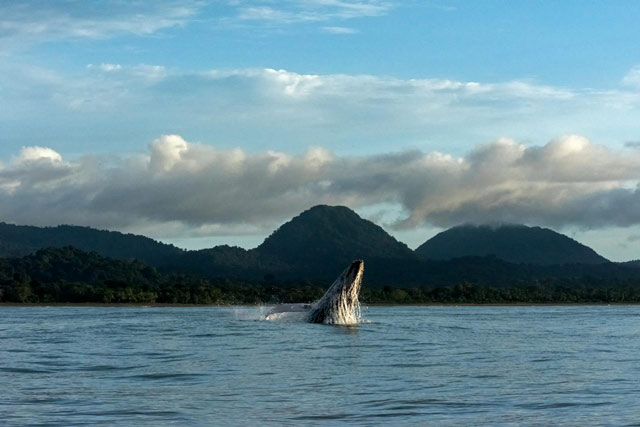
Even with the best preparation, seasickness can sometimes strike unexpectedly. If you find yourself feeling queasy during your whale watching trip, don’t panic! Here are some quick relief techniques to help you manage the nausea and hopefully get back to enjoying the experience:
- Focus on the Horizon: Fix your gaze on a stable point in the distance, like the horizon. This can help re-orient your senses and reduce the conflicting signals your brain is receiving. This is often one of the most effective and immediate ways to find some relief during whale watching seasickness.
- Stay in the Fresh Air: If possible, move to a spot on the boat where you can get fresh air. This can help alleviate nausea and make you feel less confined. Avoid areas with strong smells like engine fumes.
- Avoid Reading or Looking Down: Reading, using your phone, or focusing on close-up objects can worsen seasickness. Keep your head up and focus on the distant view, ideally the horizon.
- Stay Calm and Breathe Deeply: Anxiety can exacerbate nausea. When whale watching seasickness hits you, try to relax and take slow, deep breaths. Focus on calming your mind and body.
- Lie Down if Possible: If the boat allows, try lying down in a stable area. This can help reduce the sensation of motion.
- Inform the Crew: Don’t hesitate to let the crew know you’re feeling seasick. They are experienced with handling such situations and may have additional tips or resources to help you. They might also be able to suggest a more stable area of the boat.
Fun Fact!
Ginger’s power against nausea comes from its gingerols and shogaols, which are bioactive compounds. These compounds help speed up how quickly food leaves the stomach, they reduce stomach muscle contractions, and they may even influence how the brain perceives nausea signals.
Remember, seasickness is usually temporary. If you use the quick relief techniques I mentioned, you can hopefully manage the symptoms and get back to enjoying your whale watching adventure!
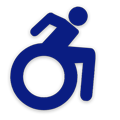
Accessibility Tip!
If you have mobility issues, it may be a good idea to pack some special purpose bags in case you experience whale watching seasickness. You might not otherwise have time or a clear pathway to get to the rest room.
Post-Trip Recovery

Even if you manage to avoid seasickness during your whale watching trip, you might still feel a little off-kilter when you return to solid ground. This is perfectly normal. Your body is readjusting to the stable environment after being on the water. Here’s how to make your post-trip recovery smoother and faster, especially if you experienced some whale watching seasickness:
- Take it Easy: Don’t plan any strenuous activities immediately after your trip. Give your body time to readjust. Relax, take a nap if you need it, and avoid rushing back into a busy schedule.
- Hydrate and Replenish: Continue to drink plenty of water to rehydrate, especially if you experienced any nausea or vomiting. Replenishing electrolytes with a sports drink or coconut water can also be helpful.
- Light Meal: Opt for a light, easily digestible meal when you get back. Avoid heavy or greasy foods that could upset your stomach. Broth-based soups, toast, or fruit are good options.
- Fresh Air and Gentle Movement: A short walk in fresh air can help your body recalibrate its balance. Gentle exercise can also be beneficial, but avoid anything too strenuous.
- Listen to Your Body: If you’re still feeling queasy or dizzy, don’t push yourself. Rest and allow your body to recover at its own pace. Everyone’s recovery time is different.
- Plan Ahead for Next Time: If you experienced whale watching seasickness, think about what worked and what didn’t. Adjust your pre-trip preparations and onboard strategies for future trips. Perhaps you need to try a different medication, a different tour operator, or focus more on specific natural remedies.
- Consult a Doctor if Symptoms Persist: While it’s normal to feel a little off after a boat trip, if your seasickness symptoms are severe or persist for an extended period after returning to shore, it’s essential to consult a doctor. They can rule out any other potential causes and provide appropriate treatment. Don’t let lingering whale watching seasickness ruin your post-trip enjoyment.
Conclusion
Don’t let the fear of whale watching seasickness hold you back. Understanding the causes of seasickness, taking proactive preventative measures, and knowing how to manage symptoms if they arise, can definitely reduce your risk and maximize your enjoyment. Remember, careful planning and preparation are key to conquering whale watching seasickness and creating lasting memories of your unforgettable encounter with the whales.
